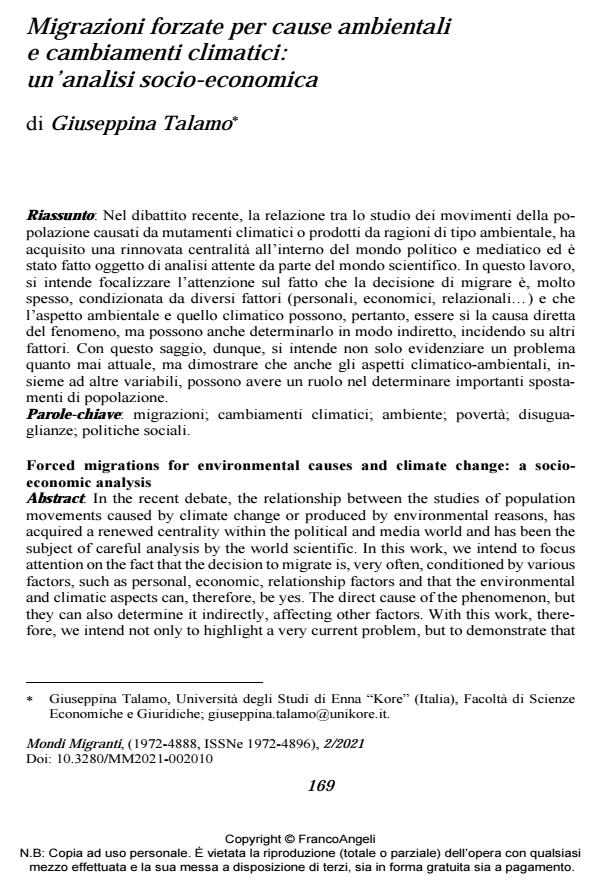Migrazioni forzate per cause ambientali e cambiamenti climatici: un’analisi socio-economica
Titolo Rivista MONDI MIGRANTI
Autori/Curatori Giuseppina Talamo
Anno di pubblicazione 2021 Fascicolo 2021/2
Lingua Italiano Numero pagine 17 P. 169-185 Dimensione file 208 KB
DOI 10.3280/MM2021-002010
Il DOI è il codice a barre della proprietà intellettuale: per saperne di più
clicca qui
Qui sotto puoi vedere in anteprima la prima pagina di questo articolo.
Se questo articolo ti interessa, lo puoi acquistare (e scaricare in formato pdf) seguendo le facili indicazioni per acquistare il download credit. Acquista Download Credits per scaricare questo Articolo in formato PDF

FrancoAngeli è membro della Publishers International Linking Association, Inc (PILA)associazione indipendente e non profit per facilitare (attraverso i servizi tecnologici implementati da CrossRef.org) l’accesso degli studiosi ai contenuti digitali nelle pubblicazioni professionali e scientifiche
Nel dibattito recente, la relazione tra lo studio dei movimenti della popolazione causati da mutamenti climatici o prodotti da ragioni di tipo ambientale, ha acquisito una rinnovata centralità all’interno del mondo politico e mediatico ed è stato fatto oggetto di analisi attente da parte del mondo scientifico. In questo lavoro, si intende focalizzare l’attenzione sul fatto che la decisione di migrare è, molto spesso, condizionata da diversi fattori (personali, economici, relazionali) e che l’aspetto ambientale e quello climatico possono, pertanto, essere sì la causa diretta del fenomeno, ma possono anche determinarlo in modo indiretto, incidendo su altri fattori. Con questo saggio, dunque, si intende non solo evidenziare un proble-ma quanto mai attuale, ma dimostrare che anche gli aspetti climatico-ambientali, insieme ad altre variabili, possono avere un ruolo nel determinare importanti spostamenti di popolazione.
Parole chiave:migrazioni; cambiamenti climatici; ambiente; povertà; disugua-glianze; politiche sociali.
Giuseppina Talamo, Migrazioni forzate per cause ambientali e cambiamenti climatici: un’analisi socio-economica in "MONDI MIGRANTI" 2/2021, pp 169-185, DOI: 10.3280/MM2021-002010